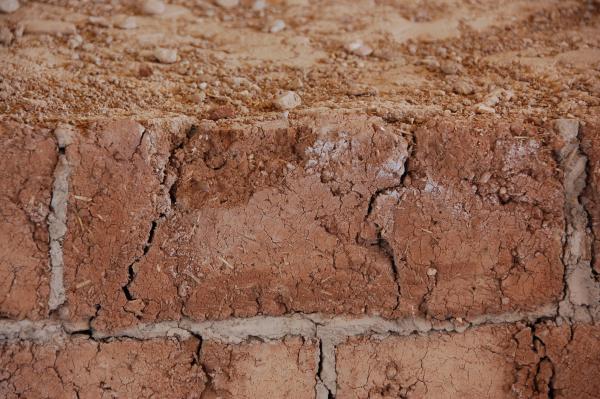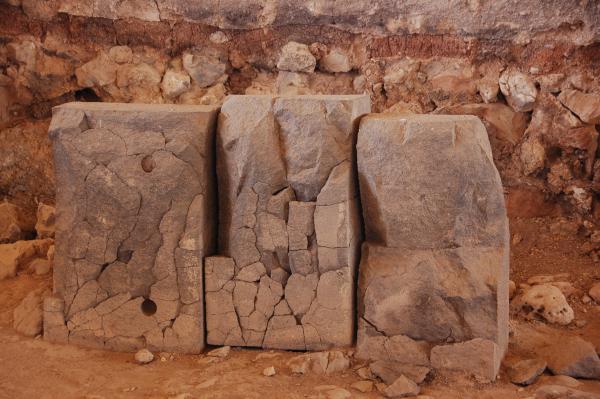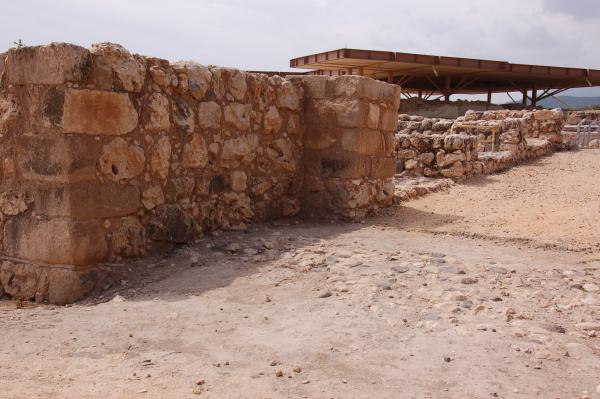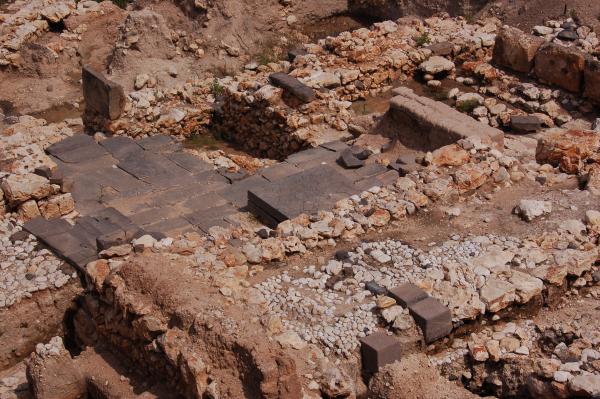I didn’t think Hazor was all that important. Boy was I wrong!
Hazor is a fortified city near Galilee between Ramah and Kadesh. It was one of the most important Canaanite towns – which explains why Joshua captured it in 1400BC. Currently, it’s the largest tel (buried excavation site) in Israel.
Joshua treated them as the LORD had told him; he hamstrung their horses and burned up their chariots. At that time Joshua turned back, captured Hazor, and struck down its king with the sword, because Hazor had formerly been the leader of all these kingdoms. They struck down everyone in it with the sword, completely destroying them; he left no one alive. Then he burned down Hazor.
However, Israel did not burn any of the cities that stood on their mounds except Hazor, which Joshua burned. (Jos 11:9-11, 13 HCSB)
These verses ends up being important because of all the cities Joshua conquered, only 3 were burned down to the ground: Jericho, Ai and Hazor. The rest were simply occupied – no extensive burning going on. We don’t know where Ai is, but we definitely know where Jericho and Hazor are located, and burn layers are magnificently useful for accurate radio-carbon dating. Sure enough, there’s a burn layer here and at Jericho that dates back to 1400BC! This shouldn’t surprise us, but there are a number of folks trying to advance the notion that IF the Exodus happened (ummm… whatever), it took place in 1270BC, not 1446BC. These burn layers are one of the strongest reasons to go with the 1446BC date. (plus, 1Kings 6:1 says that the exodus took place 480 years before Solomon started constructing the Temple. We all know that the temple was started in 966.
Hmmm… 966+480= …??)
You can read more at Nehemiah 11:33 and Jeremiah 49:28-33.
These photos were taken with the Nikon D50.
 |
The bricks here had straw. I forget why that’s useful information. |
 |
The basalt rocks had cracks. But I remember why this is is useful. Basalt is an extremely hard rock. That’s why the Egyptians used it on the foundation of the pyramids. In order to crack it like this, you have to heat it quite a bit. A LOT, actually. If you burned a town down to the ground, that’d be about the temperature needed to crack basalt. We saw lots of cracked basalt here. |
 |
Cities were generally chosen for their location to water, good soil and trade routes. So an old city location is often an excellent choice for a new city location.This is the account of the forced labor that King Solomon had imposed to build the LORD’s temple, his own palace, the supporting terraces, the wall of Jerusalem, and Hazor, Megiddo, and Gezer. (1Ki 9:15 HCSB)
Sure enough, here we find a large city gate and storage facilities, the kind that Solomon would have built if he fortified a city. |
 |
One of the cool things about continuing excavations is that when you come back next year, you’re likely to find stuff you didn’t see when you were there the year before.This location is a fine example of that. This side of Hazor hadn’t been excavated when Dr. Dave was last here. It’s a shrine to a Canannite god and you can see the high place (altar) in the very center of the photo. It’s the square piece of cracked basalt. It was about 5′ long on each side. |
